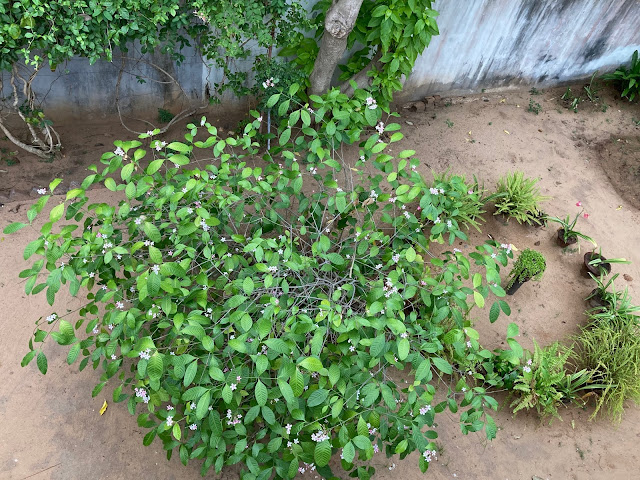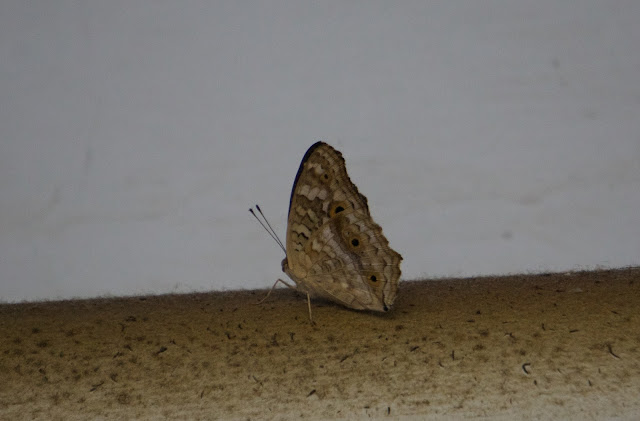 |
| Fresh leaves, dried leaves, I do spy light green, dark green, brown... and even a Lemon Pansy butterfly. |
 |
| Green circles, pink stars Brown sand and grey wall, and Amaryllis lilies, from afar. |
 |
| Catopsilia pomona, the common emigrant or lemon emigrant - resting on my wall |

 |
| Tectona grandis. In flower. Our neighbour's garden |
 |
| Junonia lemonias, the lemon pansy |
 |
| fluttered by our home |
 |
| “Come, butterfly It's late- We've miles to go together.” ― Bashō Matsuo, |
 |
| In my kitchen, Selvi stirs in curry leaves...a butterfly floats and balances ― with apologies to Basho Matsuo, |
 |
| (Sheila's picture) |
 |
| Also taken by Sheila |
 |
| Can you spot the Common Grass Yellow? Eurema hecabe. Maybe this is the post-monsoon paler morph? Caterpillar here. |
 |
| Tawny Coster - Acraea terpiscore - common in Madras too, and I think endemic to India. Birds find them unpalatable, and this is how the caterpillar looks. |
 |
| Common castor - Ariadne merione. They feed on castor, are found all over the country |
 |
| I wonder if this is also common castor or angled castor? The wings never rested flat for this butterfly. |
 |
| A Common Leopard (Phalanta phalantha), basks in the sun. They love the sun, and love lantanas as well! |
 |
| A pair of Common Ceruleans (Jamides celeno) were in the shade. These are endemic to India, and in the dry season, they look a lighter colour (almost white), as compared to this. |
 |
| A Common Wanderer - that we found wandering! If you would like to see how beautiful it looks when the wings are open, click here. |
 |
| Lemon pansy - Junonia lemonias. The caterpillar is quite spectacular! Its an easier butterfly to photograph. Basks nicely and cooperatively! |
 |
| And here is the White Orange Tip. Ixias marianne, which I first saw in Bharatpur. |
 |
| A male Danaid Eggfly. Hypolimnas misippus The female loves fancy dress. |
 |
| The Ruddy Marsh skimmer - male. |
 |
| Green Marsh Hawk (I think). Spectacular! Supposedly pretty common, but my first sighting. |


 Outside the dorm was the Malabar Whistling Thrush
Outside the dorm was the Malabar Whistling Thrush





Genus Riopa from Thiruvalluvar Nagar, Chennai, Tamil Nadu, IN on July 07, 2025 at 07:35 AM by flowergirl_madras � iNaturalist After a warm a...
